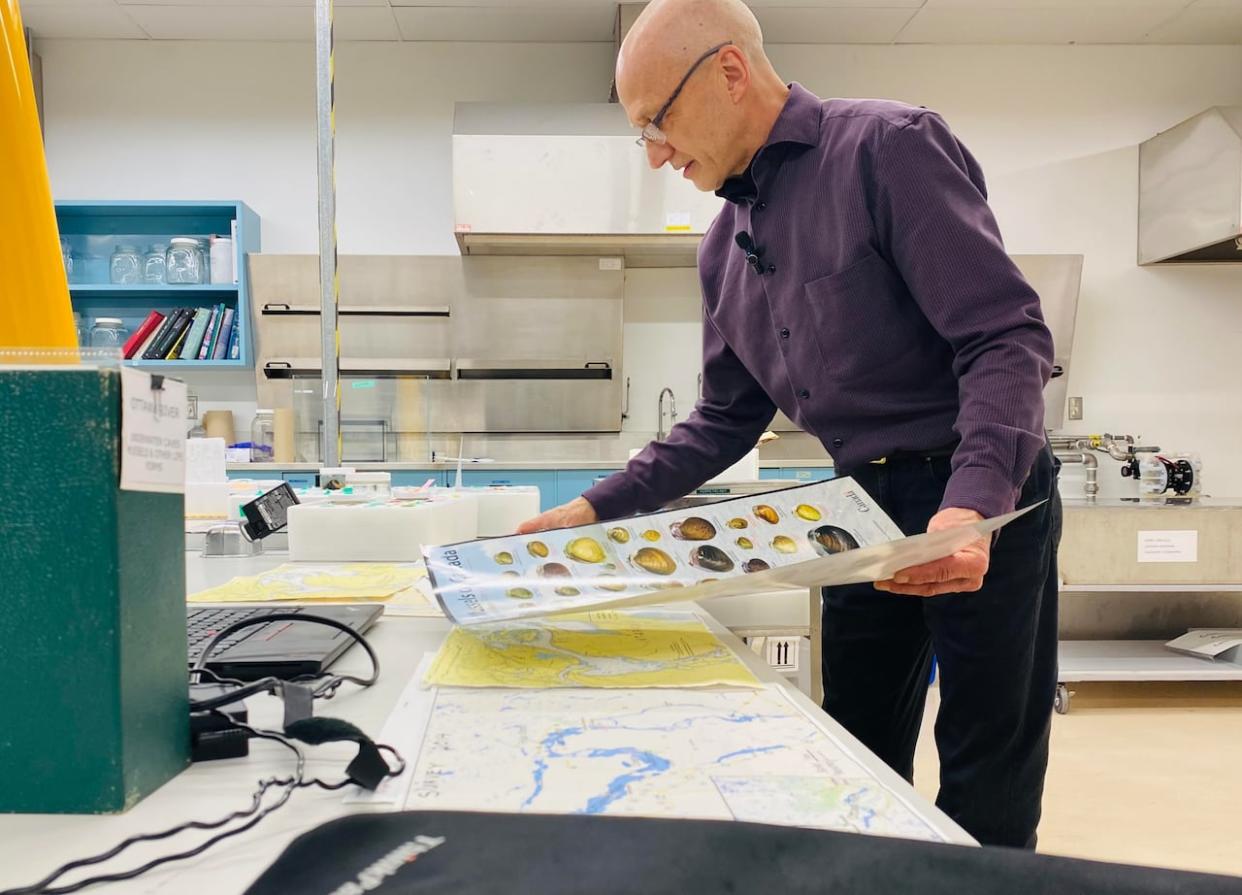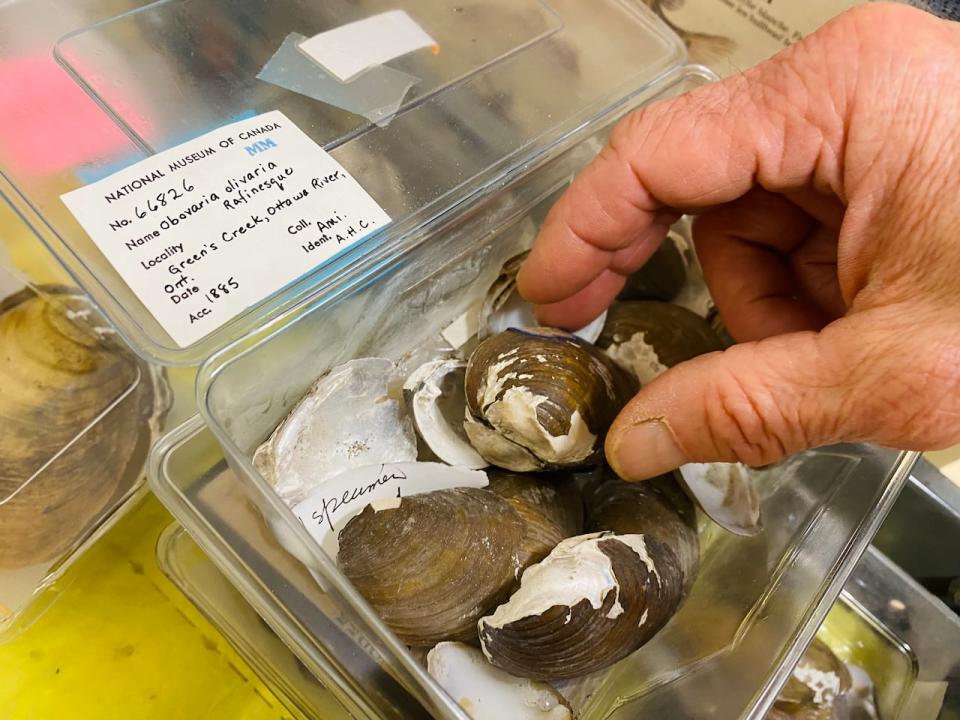Nuclear waste could threaten rare spot where endangered mussel thrives, experts say

- Oops!Something went wrong.Please try again later.
Researchers with the Canadian Museum of Nature say a proposed nuclear waste storage facility upstream could destroy the delicate balance of two endangered species thriving in an Ottawa River cave network.
Last month, the museum's André Martel lowered his scuba goggles and plunged into what he deemed an "extraordinary" segment of the river around Lac Coulonge east of Pembroke, Ont.
An absence of hydroelectric dams, a fast-flowing current, naturally forming fluvial sand dunes and the country's longest freshwater cave network have made this an Eden for an endangered, wavy brown mollusk called the Hickorynut mussel.
Martel believes the delicate population of the freshwater mussel has a secret ally in a fish just as enigmatic and just as threatened: the lake sturgeon.
Like a good scientist, Martel is unwilling to count his eggs before they hatch, but he said there is good evidence to support the view the sturgeon and hickorynut are living out a secret buddy movie below the waves in this untamed area of the Ottawa.

Hickorynut mussel samples, collected from Green's Creek in Ottawa in 1885, are part of the collection at the museum. (Stu Mills/CBC)
This fall a research team made up of biologists from the museum, Department of Fisheries and Oceans and Ontario Ministry of Natural Resources and Forestry carefully examined sturgeon in the river near Westmeath.
Some of their work was captured this fall in a Radio-Canada documentary for the programme La Semaine Verte.
The research is to try to prove the hickorynut larvae, called glochidia, are hitchhiking upstream on the gills of the massive, ancient fish.
The team did find glochidia on the gills of the sturgeon in their samples. Last month Martel's lab interviewed DNA experts with the skills to determine if the microscopic larvae are, in fact, the offspring of Hickorynut mussels.
The two unusually healthy populations of endangered species have drawn the scientists here wondering why and how.
New facility at Chalk River
Though they don't yet have the full answer, there is real concern about a proposal to dump nuclear waste near the shoreline upstream in Deep River, Ont.
A consortium led by SNC-Lavalin has proposed a "near surface disposal facility" waste site just one kilometre from the river.

The "near surface disposal facility" proposed by the privately owned Canadian Nuclear Laboratories would be on a ridge one kilometre from the Ottawa River, not far from Chalk River Laboratories in the foreground. (City of Ottawa)
The Canadian Nuclear Safety Commission plan has been panned by Montreal-area mayors whose millions of residents draw drinking water from the Ottawa River and by Algonquins who compared the proposal to building an outhouse next to a drinking well.
"Let's be sure that we are aware of what we're doing, what is at stake," Martel said.
He said special protection is needed for the 141-kilometre segment of river where the fragile hickorynut and ancient sturgeon are working together to filter silt and bacteria from the water like a massive river kidney.
Katriina Ilves, a Canadian Museum of Nature ichthyologist — a marine biologist who studies different fish species — called the Lac Coulonge-area sturgeon population "an important, and enigmatic species."
"I would have some concerns over any type of development that would have the potential to lead to contamination of this water system," she said.
In an email, a spokesperson with the nuclear safety commission said it couldn't answer specific questions about the proposal while the decision was likely just a few weeks away.

